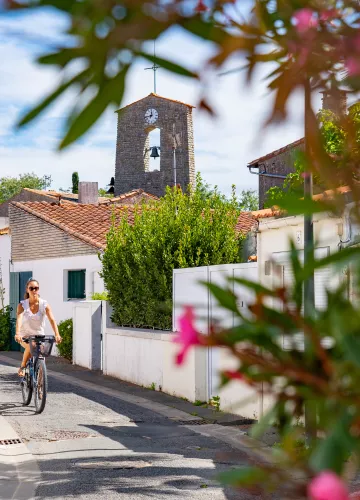
La Brée les Bains
A listed seaside resort, La Brée les Bains has preserved its authentic charms while remaining a haven of peace between marshes and colorful alleyways. Facing the mainland, La Brée les Bains offers all the services and activities needed for a successful holiday: beaches, market and shops, sports and discovery activities, cycle paths...
A little history...
La Brée-les-Bains, a seaside resort in the north of the island, belonged to the commune of Saint-Georges d'Oléron until 1953. In the past, this small village made the most of the resources provided by the sea, from the fish caught on foot or in locks (which can still be seen today) to the kelp used as fertilizer in the village's many vines. The villagers have always been very involved in the life of La Brée: in the construction of dykes to protect its beach, in the renovation of the church and in the planting of the cypress trees that so aptly represent the village. The mitre mill, the salt marshes, the beach and the church are just as good examples of how La Brée is a quiet, authentic village that has retained its charm of yesteryear.

At the turn of a mill...
As you walk, cycle or drive around the village, you'll come across stone towers, sometimes covered in whitewash or paint, often isolated from other buildings. In fact, the island was once known as " the island of a hundred mills ", a testament to the importance of milling on the island, even though there are now only around thirty mills on the island, five of which are of the "onglet" type (an architectural feature that marks the narrowing of the barrel in steps from base to top). Among these is the moulin de La Brée-les-Bains, an emblematic site in the history of Oleron milling.
It is shown in Labray on a map dated 1686, but it is not known exactly when it was built. It has been present since the 17th century, and operated, worked and ground until 1920. Between these two periods, it underwent a number of modifications, notably the switch from canvas-covered wings to the Berton system. The Berton system, which first appeared in France in the 19th century, eased the miller's workload by enabling him to adjust the canopy directly from the inside, and quite quickly, by opening or closing the wings like a fan. Like many mills, it ceased operations at the beginning of the 20th century (competition from industrial flour mills, changing lifestyles...). As time went by, the mill declined: the guivre (the beam used to turn the mill roof) was broken, the wings were reduced to a thin wooden beam, and certain parts of the mechanism disappeared (millstones, hopper, etc.). Despite this, the mill is extremely well preserved compared to other mills, which are now nothing more than empty towers, or even ghost towers, where only the name of the street suggests the presence of a mill...
In 2012, the Communauté de Communes de l'île d'Oléron acquired the site in partnership with the commune of La Brée, which owned the walls. Since then, the mill has been undergoing rehabilitation, with an ambitious development project targeting economic, tourism and cultural objectives.